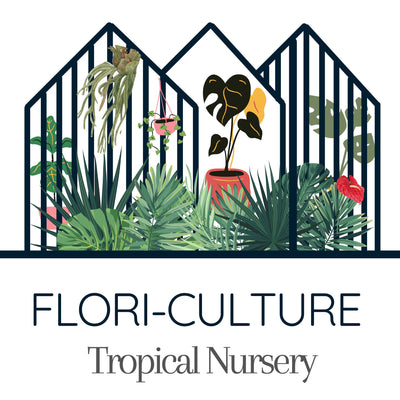$19.00
| /
Nepenthes ventrata - The Perfect Beginner's Pitcher Plant
Scientific Name: Nepenthes ventrata
Common Names: Ventrata Pitcher Plant, Monkey Cup
Hybrid Cross: N. ventricosa × N. alata
Difficulty Level: Beginner-Friendly ⭐⭐⭐⭐⭐
Meet Your New Carnivorous Companion!
Say hello to Nepenthes ventrata – quite possibly the most forgiving and rewarding carnivorous plant you'll ever grow! This stunning hybrid combines the best traits of its parents: the robust nature of N. ventricosa and the elegant pitcher shape of N. alata. The result? A plant that's both gorgeous and incredibly easy to care for.
What Makes This Plant Special?
This isn't just any pitcher plant – it's a hybrid that is great for beginners. N. ventrata produces beautiful, wine-red pitchers that can reach 4-6 inches tall, each one a perfect little trap for unsuspecting insects. The pitchers start out green and gradually develop that stunning burgundy coloration as they mature. Especially in brighter light.
Cool Science Fact: Those pitchers aren't just pretty – they're sophisticated death traps! The slippery rim (called a peristome) and waxy interior walls make escape nearly impossible for insects. Once they fall in, digestive enzymes break them down into plant food. Nature's own little recycling system!
Care Requirements (Don't Worry, It's Easy!)
Light
Give your N. ventrata bright, indirect light. Think "bright bathroom window" rather than "desert sun." A few hours of gentle morning sun is perfect, but avoid harsh afternoon rays that might stress your plant. LED grow lights are great too. We give them 12 hours of bright but not scorching light per day.
Water
Here's where this plant shines for beginners – it's not as picky about water as other carnivorous plants! Use distilled, rainwater, or reverse osmosis water if possible, but it can tolerate occasional tap water (if yours isn't too hard). Keep the soil consistently moist but not waterlogged.
Humidity
N. ventrata appreciates humidity around 50-70%, but it's surprisingly adaptable. If your home is on the dry side, try placing it on a humidity tray or near other plants. It's much more forgiving than its highland cousins!
Temperature
Room temperature is perfect! This hybrid thrives in temperatures between 65-85°F (18-29°C). It can handle slight temperature drops at night, which actually helps with pitcher development.
Soil
Use a well-draining, carnivorous plant mix. A blend of sphagnum moss, perlite, and orchid bark works wonderfully. Avoid regular potting soil – it's too rich and will harm your plant.
Feeding Your Plant (The Fun Part!)
While your N. ventrata will catch its own food if kept outdoors, indoor plants might need a little help. You can:
- Drop a small insect into a pitcher once a week
- Use freeze-dried bloodworms or fish food (sparingly!)
- Let it catch fruit flies naturally
Pro Tip: Never feed the pitchers hamburger, cheese, or other human food. Stick to insects, fish food, or specialized carnivorous plant food!
Growth and Pitchers
Your N. ventrata will start as a small rosette and eventually develop into a vining plant. Young plants produce lower pitchers that sit on the ground, while mature plants create upper pitchers that hang from tendrils. Both types are functional and beautiful!
Expect steady growth throughout the growing season. With proper care, your plant can produce new pitchers regularly, giving you an ever-changing display of natural artistry.
Why Choose N. ventrata?
- Beginner-friendly: Forgives mistakes and adapts well to home conditions
- Beautiful: Stunning red pitchers that are conversation starters
- Functional: Actually catches and digests insects (nature's pest control!)
- Vigorous: Grows steadily and produces pitchers reliably
- Hybrid vigor: Combines the best traits of both parent species
Troubleshooting Common Issues
No pitchers forming? Check humidity levels and make sure it's getting enough light. Stress from repotting or environmental changes can temporarily stop pitcher production.
Pitchers turning brown? This is normal! Old pitchers eventually die back. As long as new ones are forming, your plant is healthy.
Leaves yellowing? Could be overwatering or poor water quality. Let the soil dry slightly between waterings and switch to distilled water.
Plant Size and Shipping
Your N. ventrata will arrive as a healthy, established plant in the pot size you select, with active pitchers. These plants are mature enough to continue producing pitchers in your care while still being young enough to adapt to their new home.
The Bottom Line
Nepenthes ventrata is like the golden retriever of carnivorous plants – friendly, adaptable, and incredibly rewarding to grow. Whether you're new to carnivorous plants or a seasoned collector, this hybrid will quickly become one of your favorites. Plus, there's something deeply satisfying about owning a plant that can literally eat bugs!
Ready to welcome this amazing plant into your collection? Your N. ventrata is waiting to show you just how incredible carnivorous plants can be!
Note: As with all living plants, appearance may vary slightly from photos. Each plant is unique and beautiful in its own way!
Collections: Currently Available , Plants
Category: carnivorous , carnivorous plants , Live Plant , monkey cup , nepenthes , Other Tropicals , pitcher plant , predatory
Type: Live Plant







